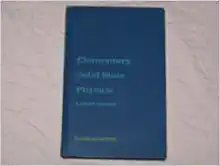Question
A group of scientists are running a series of experiments and collecting data from two measurable quantities, A and B. They suspect that these quantities
A group of scientists are running a series of experiments and collecting data from two measurable quantities, A and B. They suspect that these quantities are related by a power law equation of the form A = cBn, where 'c' is a constant and 'n' is an exponent. The units are specific to this experiment which are defined as 'arbitrary units' or a.u.
They run 10 experiments and collect the following pairs of data:
Experiment 1, A1 = 0.011 a.u. , B1 = 31400 a.u.
Experiment 2, A2 = 0.022 a.u. , B2 = 7870 a.u.
Experiment 3, A3 = 0.027 a.u. , B3 = 3480 a.u.
Experiment 4, A4 = 0.038 a.u. , B4 = 1963 a.u.
Experiment 5, A5 = 0.055 a.u. , B5 = 1256 a.u.
Experiment 6, A6 = 0.061 a.u. , B6 = 879 a.u.
Experiment 7, A7 = 0.070 a.u. , B7 = 643 a.u.
Experiment 8, A8 = 0.081 a.u. , B8 = 491 a.u.
Experiment 9, A9 = 0.092 a.u. , B9 = 383 a.u.
Experiment 10, A10 = 0.11 a.u. , B10 = 321 a.u.
Using "Logarithmic Plots" as a guide, what are the values for 'c' and 'n'? What is the uncertainty of 'c' and 'n'? Show the appropriate plots and also show any calculations you used to determine these values. You can use MS Excel or curve.fit (or any other data graphing software that you are familiar with) to produce your graphs.
Step by Step Solution
There are 3 Steps involved in it
Step: 1

Get Instant Access to Expert-Tailored Solutions
See step-by-step solutions with expert insights and AI powered tools for academic success
Step: 2

Step: 3

Ace Your Homework with AI
Get the answers you need in no time with our AI-driven, step-by-step assistance
Get Started


